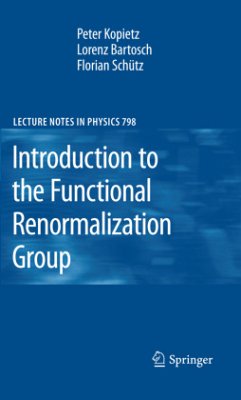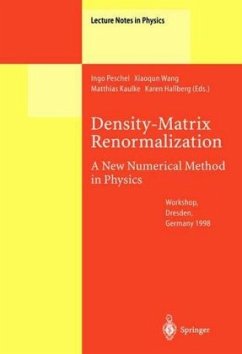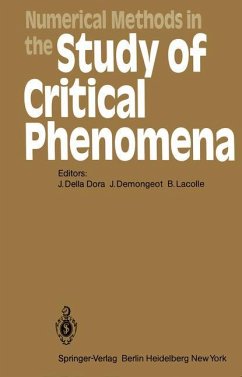
Introduction to the Functional Renormalization Group
Versandkostenfrei!
Versandfertig in 6-10 Tagen
65,99 €
inkl. MwSt.
Weitere Ausgaben:

PAYBACK Punkte
33 °P sammeln!
The renormalization group (RG) has nowadays achieved the status of a meta-theory, which is a theory about theories. The theory of the RG consists of a set of concepts and methods which can be used to understand phenomena in many different ?elds of physics, ranging from quantum ?eld theory over classical statistical mechanics to nonequilibrium phenomena. RG methods are particularly useful to understand phenomena where ?uctuations involving many different length or time scales lead to the emergence of new collective behavior in complex many-body systems. In view of the diversity of ?elds where R...
The renormalization group (RG) has nowadays achieved the status of a meta-theory, which is a theory about theories. The theory of the RG consists of a set of concepts and methods which can be used to understand phenomena in many different ?elds of physics, ranging from quantum ?eld theory over classical statistical mechanics to nonequilibrium phenomena. RG methods are particularly useful to understand phenomena where ?uctuations involving many different length or time scales lead to the emergence of new collective behavior in complex many-body systems. In view of the diversity of ?elds where RG methods have been successfully applied, it is not surprising that a variety of apparently different implementations of the RG idea have been proposed. Unfortunately, this makes it somewhat dif?cult for beginners to learn this technique. For example, the ?eld-theoretical formulation of the RG idea looks at the ?rst sight rather different from the RG approach pioneered by Wilson, the latter being based on the concept of the effective action which is ite- tively calculated by successive elimination of the high-energy degrees of freedom. Moreover, the Wilsonian RG idea has been implemented in many different ways, depending on the particular problem at hand, and there seems to be no canonical way of setting up the RG procedure for a given problem.














